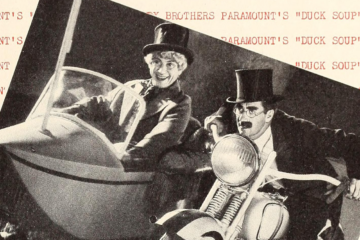The Princess and the Publisher
“We don’t boast about being bankers these days. We’re all in the dog house!”

“Charming. Simply charming!”
Some days around here at Pre-Code Follies Central it’s kind of a trudge. Maybe one movie is so good I can’t stop talking about it, may another movie is unbearable and I just need to explain why.
Today we have the happy medium: a nice pleasant Pre-Code fantasy that doesn’t push many boundaries or aim very high.
The story does have its fascinations in line with the early 1930’s, as its set in a tiny kingdom of Taronia that doesn’t have much money to do anything with besides get by. King Anatol (Henry Stephenson) sits in a cafe and nods politely at his subjects as they trudge about. Seeing this, an American banker on holiday, Mr. Gresham (Edward Arnold), wagers that he can get his bank to offer the country a generous subsidy if he can have the king’s daughter, Princess Catterina (Sylvia Sidney), take a goodwill tour of America.

All of the private investigators dress and act the same. If I had to guess one thing in the film that came from Preston Sturges, this would be at the top of the list.
Unfortunately, as soon as she arrives, the Princess comes down with the mumps. Gresham sends out an army of PIs to track down a girl who looks identical to her, and they discover Nancy Lane (Sylvia Sidney again). Nancy’s a struggling actress with hardly a dime to her name, so the chance to play royalty for a month while the princess recovers sounds perfect to her.
However there’s a young, roguish and decidedly handsome newspaper publisher who’s taken aim at Gresham and the princess by default. He’s Porter Madison (Cary Grant), who runs a rag that’s eager to uncover the truth about Catterina/Lane. However, as you can imagine, romance soon blossoms, though we know that Nancy will soon have to come clean about who she really is.
It’s a pretty old plot in a lot of ways (and on some level reads quite a bit like Roman Holiday though nowhere near as good), and we’re lucky that Sidney and Grant are so charming or this farce could easily fall on its face. For sure. Sidney in particular manages a good double role, and we get to some fairly early use of special effects to have her in the same scene with herself.

I had pictures that illustrated the film’s visual style better, but I’ll be damned if I don’t post this one.
The supporting cast helps a lot too, as so many of them lurk around the edges, eager to either punish Grant for his impudence or get Sidney back for slighting them. Count Nicholaus (Vince Barnett) is the foppish fiance of Princess Catterina who shows up and makes things difficult, while the reporter who’s attempting to show Grant up is played with some amusement by Ray Walker.
It’s hard to get in depth with Thirty Day Princess since there’s simply not a whole lot to it. It speaks to the American enchantment with adorable little monarchies, big banks gleefully robbing Americans blind, and how love can find a way. Grand, broad topics all grand and broad here as well.
The movie is directed by Marion Gerring, one of those directors who only made about 20 films and then faded off into history; he manages to keep the story moving at a fine clip and decorate it pleasingly, but doesn’t do much memorable besides that.
The more recognizable name in the credits besides Grant’s these days would be that of co-writer Preston Sturges. Sturges later claimed he didn’t have a lot to do with the final product, but it’s not hard to get hints of his style– cartoonish with real, painful emotions flaring up when necessary.

Dangerously close to banker wiener here.
But beyond that, there’s not much else to say about Thirty Day Princess. If it’s on TCM and you like Cary Grant, you’ll probably end up with a smile. Otherwise, it’s just a nice trifle.
Trivia & Links
- This review really seals the mental picture I’ve had that Mordaunt Hall is that stereotypical fast-talking 1920’s newspaper men. Also, he denotes it as, “a congenial pictorial comedy.” Really selling this one hard, I see.
- CaryGrant.net doesn’t have too much interesting written about this one, but they do have a pretty bitchin’ image gallery for this film.
- Here’s the poster for this week’s flick. I like the top left. Sylvia Sidney standing up, though, looks like she’s trying to out-Joan Crawford Joan Crawford:





